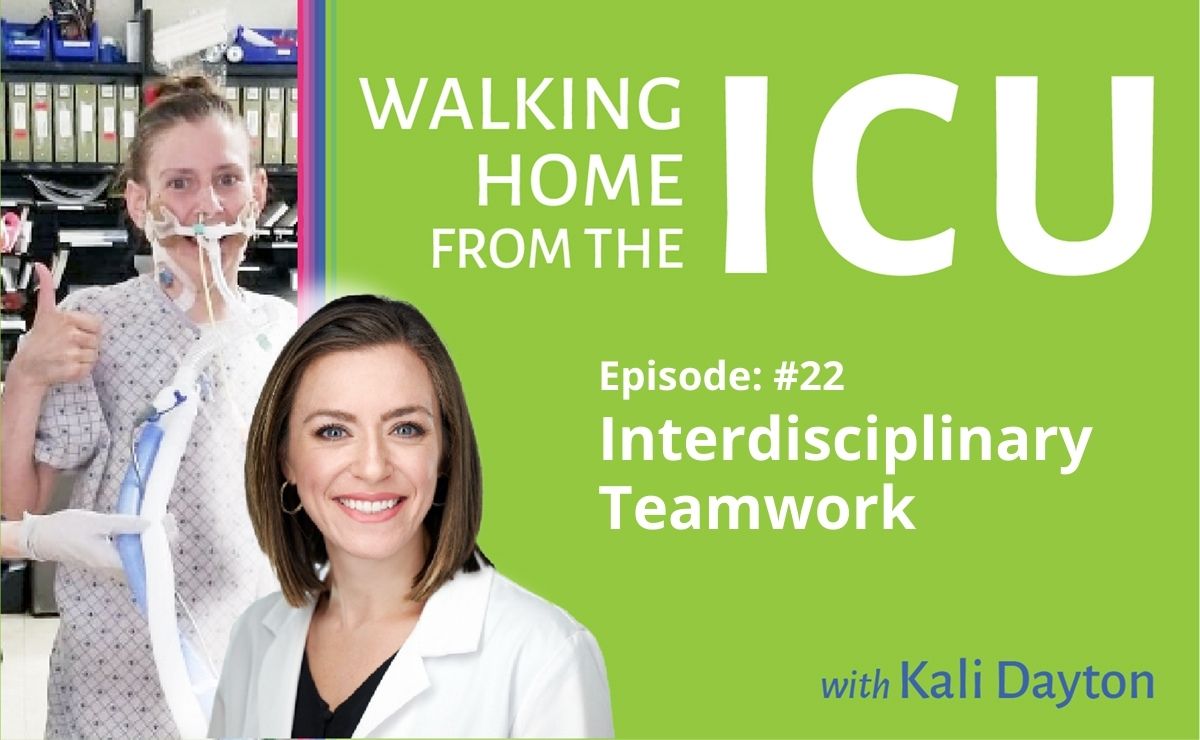SUBSCRIBE TO THE PODCAST
Patients cannot walk out of the ICU without the efforts and expertise of each discipline. Kali discusses the role each discipline plays in returning patients to their lives.
Episode Transcription
Kali Dayton
I saw a profound statement on Twitter that said, “No one person can overcome delirium.”
That is so true. It is as Polly said last episode, “An awake and walking culture requires buy in from everyone. delirium cannot be prevented, and patients will not be kept strong during critical illness without a multidisciplinary approach.” Nurses can keep their patients awake, but if respiratory therapists are not there to help walk the patients, there is no way we can keep them walking.
Physical therapists can have a goal of walking patients. But if they are sedated, then physical therapists cannot do their job, we can have all the equipment up and ready to walk. But without the expertise of physical therapy every day, optimal mobility won’t happen. Nurses can want to achieve this goal. Though our nurse practitioners and doctors that have the same vision, they may face an uphill battle without the support of pharmacy. We may be inclined to jump to narcotics right away, or give unnecessary medications at three in the morning. Everyone collaborate- they create a game plan at the beginning of the shift and have a rough idea of who is traveling, what’s going on with the other patients. who was going to walk first, and they anticipate helping each other.
Their goal is to help everyone succeed and make the burden lighter for everyone else. They are excited to see physical therapy enter the unit. Usually because their patients are already writing notes, asking to go for walks. I have seen a meme that reflected better sentiments. Nurses feel when physical therapists leave patients in the chair. That didn’t make sense to me. I see nurses walk into the room in the morning and get their patients up in the chair to wait for their walk with physical therapy.
You see- mobility, delirium prevention, and preservation of function is not just isolated to PT, OT or any one discipline. As Polly said, “We do not work in silos. We work together.”
The next series of episodes, each discipline of an ICU with an awake and walking culture will share with us their roles in getting patients back to their lives. We will see how this culture penetrates each specialty in the ICU, and the power that comes with collaboration.
Every day, we have a multidisciplinary rounds meeting with a member of each team of the ICU and the loved ones of the patients. We discuss each case and plan. A big part of the discussion are the risk factors for delirium, obstacles to mobility, and where the patient is in their course to be functional in their lives.
Again, these discussions are brief, succinct, but powerful. Everyone is in it together. Everyone has the same vision for their patients and knows the part that they play. They have the vision of them walking out of the ICU because they know it can be done and they have done it. The only people who truly qualified to teach this process are the ones that literally walk the talk so I present to you the masters of the awake and walking ICU.
Transcribed by https://otter.ai
SUBSCRIBE TO THE PODCAST




